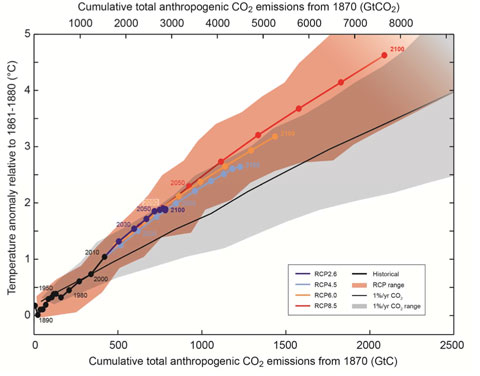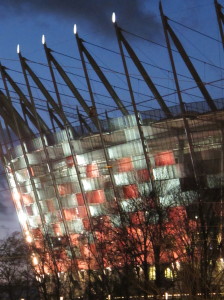Aafter all the leaks and attempted spin, the final version of the IPCC’s Summary For Policymakers of the Working Group One report on the physical science basis for our current understanding of climate change has just been released. Download the PDF from the IPCC site here. The full report will follow on Monday — a massive 3,000 page tome that summarises 9,200 scientific papers published since AR4 was released in 2007. The bottom line is clear enough:
Warming of the climate system is unequivocal, and since the 1950s, many of the observed changes are unprecedented over decades to millennia. The atmosphere and ocean have warmed, the amounts of snow and ice have diminished, sea level has risen, and the concentrations of greenhouse gases have increased.
The Science Media Centre asked Professor Dave Frame, Director of the NZ Climate Change Research Institute at VUW to explain the key points:
- It is extremely likely that human activities caused more than half of the observed increase in global mean surface temperature since 1950;
- It is virtually certain that natural variability alone cannot account for the observed global warming since 1950;
- Global mean temperatures will continue to rise over the 21st century if greenhouse gas emissions continue unabated;
- The principal driver of long term warming is the total cumulative emission of CO2 over time;
- To limit warming caused by CO2 emissions alone to be likely less than 2°C, total CO2 emissions from all anthropogenic sources would need to be limited to a cumulative budget of about one trillion tonnes of carbon, emitted as CO2, over the entire industrial era, about half of which have been emitted by 2011.
The emphasis on carbon budgets is new for this report, and makes the emissions reduction challenge we face only too clear. Here’s Fig 10 from the SPM:

The black dots on the bottom left represent historical carbon emissions up to 2010. The various coloured lines show what various emissions pathways — new for AR5 (see Skeptical Science’s explanation) — mean for global temperatures by 2100. Only the most aggressive emissions pathway — RCP 2.6, the purple line — gives us a chance of staying under a 2ºC target, but assumes that we are actually reducing atmospheric CO2 by the end of the century. It remains an uphill struggle, in other words, and the hill gets steeper the longer we leave starting out on the climb.
Like this:
Like Loading...
 New Zealand is coming under increasing scrutiny in Lima, not least because it’s our turn to be reviewed by the UNFCCC process.
New Zealand is coming under increasing scrutiny in Lima, not least because it’s our turn to be reviewed by the UNFCCC process.


You must be logged in to post a comment.